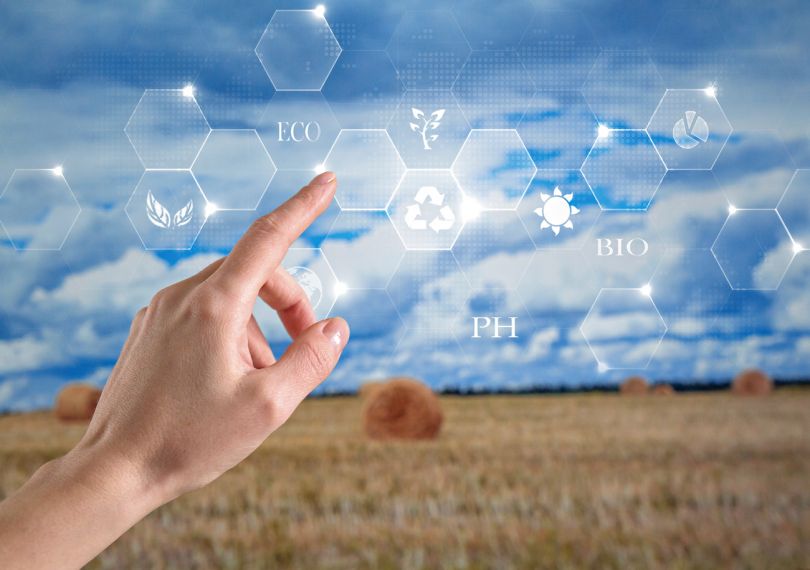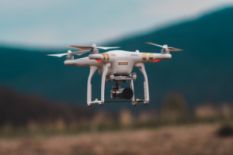Farm machinery operated by on-board computers, remotely piloted aircrafts, researching the crop fields have come to everyday practice of agribusiness. More and more forward thinking companies wish to transfer from the specific work functions automation to the Integrated Management System (IMS) providing on hand tools for improvement of the management decision quality. What are challenges to the best use of the smart farming practice in Ukraine and prospects for its extension?
– First off, let us make it clear what is smart farming?
In my opinion, this is not all about the digitalization and automation of the operations, but the better use of core resources like funding, the land bank capacity, the machinery fleet and the man-power. And with time it’s about streamlining the workflow and making the most optimal use of available resources.
– Is there a difference between precision agriculture and smart farming? Aren’t these terms confused?
Those are entirely different things. Precision agriculture is a management concept based on adoption of site-specific crop cultivation technologies to unlock the farmland potential or to improve crop yields. It’s about availing of chemical analysis of soils, precision sowing, and variable rate application, as well as comparing maps of soil moisture, rainfall and vegetation condition on camera records. Instead, the efficient use of these AgroTech tools in the operations features the smart farming.
Let me give an example. Crop harvesting alongside the uploading the load-transfer device, which allows to get rid of the transport operations in the crop field is a smart farming, saving fuel and service hours. Though the site-specific fertilization, based on soil analysis, vegetation maps and data on crop yields in earlier periods or the automatic sprayer's control system are dealing with precision agriculture.
– Adoption of integrated IT-products requires in-depth internal transformations within a company and is a kind of test for the available business model. What are the basic premises for the Computer-Assisted Management deployment in agricultural companies?
Transfer to the digital control practice may be motivated by, so to speak, external and internal agents. The current market context imposes new requirements to businesses, and this is a basic “external” premise. Gaining and maintaining the high competitive profile should rest on the overall control of business operations which should be transparent, streamlined and responsive, as well as on reliable data on them. The lack of accurate records of the completed daily work scope, failure in technology compliance and resource management control underlie the mainstream of digital control systems in agribusiness.
Readiness of operations and commitment of the top-management (Chief Executive, Financial Officer and Chief Agronomist) to drastic changes altogether lay the “internal” grounds for digital control systems adoption.
Most of agribusinesses I used to work with got to realize on their own they wanted to raise effectiveness of their operations.
– Designing a new software product for the specific agricultural operator requires that all details of the year-long work flow be explored and analyzed for at least one agricultural season. How much time does it take to develop a new or to adapt the ready-for-use software product?
Since 2011 I’ve been involved in the Tetra software design project for the UkrLandFarming agriholding, project was led by Volodymyr Babiy (now, Deputy Director for AgroIT innovations, UkrLandFarming Group – Editor). We‘ve gone the way from the business process mapping and “to be” modeling to technical requirements specification and writing the program itself. The improvement of computer-assisted management tool may go on constantly – there’s always what to add or modify.
In 2015-2016, our team has started developing the open-market software product called Forland designed to meet our customers’ request. The work tentatively takes at least three years. The analysis and mapping of actual business-processes will be followed with automation, tailoring to customer’s needs and code writing. We’ll work out an integrated software product consisting of individual components with specific purposes and functions intended for each one.
Software adaptation may take from six months up to an unlimited period of time depending on the customer’s preferences.
The major advantage of a new product development is in business processes and business model refining for the specific site.
Adaptation may be complicated for the team due to lack of experience in dealing with the model underlying the ready program product.
– And what about the time needed to transform the existing business-model to fit the IT-management adoption? Do the companies readily change their corporate culture?
Duration of the product adoption as a system requires a special consideration. It depends on the customer scale and skill level. The quickest was the IT-system implemented in one and a half month, the longest was a system deployed within a year.
In order to get the computer-assisted management and accounting system adopted as quickest as possible, digitized cadastral information, field survey data, performance parameters audit findings will be required as well as a full-featured cooperation on the part of the integrator and the customer. But this is all about the initial phase only. Since the full-on transfer of a company to the digital management not only involves the operational units (farm machinery operators, agronomists, line managers) but the whole office as well. An outstanding work has to be done with accounting and economic staff, while agronomists and top managers require entirely different job to be done. Virtually, the computer-assisted management imposes the new operating model upon all members of the staff from tractor-driver to director. Though not everyone who started the IT-system adoption reaches the target.
– What is the key to the digital management implementation success?
This way is not complicated at first glance: auditing (processes, resources, skill level of the staff) – drafting the plan for technology and software tools adoption – step-by-step implementation process. On a practical level, many companies yield up midway, unable to see things through, either for human errors or lack of funding to continue.
I would mention the insufficient maturity of a company (which defines the demand for transformation by itself) as a major challenge to the successful transfer to IT-management as well as the staff reluctant to change the corporate culture and master new technologies; lack of funding and a person in charge who would have not only relevant qualification level (it may be gained on the job), but the commitment as well. Both template thinking (Ukrainian farm producers for the most part are quite conservative and do not wish to change anything which seems to work well) and the negative experience in IT-system or tools adoption, may play the important role here.
– Is there a demand for the smart farming in the Ukrainian agrarian sector compared with the world practice?
Unless the very few companies managed by people of the old school, one could hardly find the businesses, which would not use digital technologies now. Agriholdings have started their way towards AgroTech long ago. Today, even the companies having the land bank not exceeding one thousand hectares, which is rather small for our market, approach digital technologies. And it strongly suggests that almost all farm producers are in need for the fast access to clear and credible information for decision-making and response activities.
I know about six major hubs supporting development of the AgroIT-solutions in the world: Central Europe, Eastern Europe, USA, Brazil, Singapore and Israel. This points out that this area is truly in the global focus now.
Last year I had the occasion to travel much in Europe where I noticed a curious trend. The European farmers do not change their equipment and practices annually – instead, they try to have the available resources remaining in use for as long as possible, plan repair activities and ensure relevant maintenance (to a certain extent, thanks to available infrastructure). In Ukraine, it seems that everybody goes after new things. Probably, mentally, the newest is compliant with the best for Ukrainians.
I liked the smart farming concept, underlying the AgroOffice software (a new generation Farm Management Information System, owned by Yara International since 2016 – Editor). It suggests seeking for an optimum point to apply fertilizers and machinery. What for wasting fertilizers, if it won’t bring about progressively larger yields and profits?
– Which intelligent technologies are on trend for the Ukrainian agrarian business now?
In the first instance, use of Multi Spectral Survey not only from a space platform, but also by means of remotely piloted aircrafts, which allows assessing crops condition by the NDVI index (Normalized Difference Vegetation Index). Highly-demanded are remote sensing technologies for weather condition monitoring, soil density and moisture content measurement, agrochemical analysis and field irrigation control. A newish product called N-Sensor (tractor-mounted remote sensing device, which ensures that the crop nitrogen requirement is measured as the tractor with the fertiliser spreader passes across the field and the fertilizer application rate is variably adjusted accordingly – Editor), has become the benchmark technology for precision agriculture in Europe.
Many urgent needs of the Ukrainian agribusiness have not yet been addressed by now, including the computer-assisted elevator management, along with grain-handling center automatic control and grain conveying lane divider by quality; orchard management with weather conditions monitoring; watering management and quality control (all watering systems being displayed in a single window); full-featured finance component. So, there is room for improvement.
– Is it appropriate now to talk about development of agrotechnologies made in Ukraine for a global market?
I assume the lack of capital is the major challenge as far as the agrarian sector development is concerned. It is not a place where the software product may go upscale within three to six months and enhance its capital value up to hundreds of millions dollars – time is needed to do that. And in playing for time one should have funding on hand. That is why my answer is quite simple – any AgroIT-product having competitive profile on the global market will be bought out by big players. And they operate now in three business domains – chemical, seed and machinery suppliers.
– Which prospects do you see for Ukraine to become a cluster of agroinnovations?
Ukraine does have such prospects, though we need commitment and consolidation of all market players, a free hand to run things on the part of the government and as much competition as possible. First and foremost, we need a shared training center for agrarian sector operators, facilities for agrotechnologies trials and new AgroTech developments… In other words, brand-new research institutes and Ukrainian R&D centers should be launched to meet the agrarian sector’s needs.
Interviewed by Natalia Kyrylenko
Photos shutterstock and Mykola Panchuk








